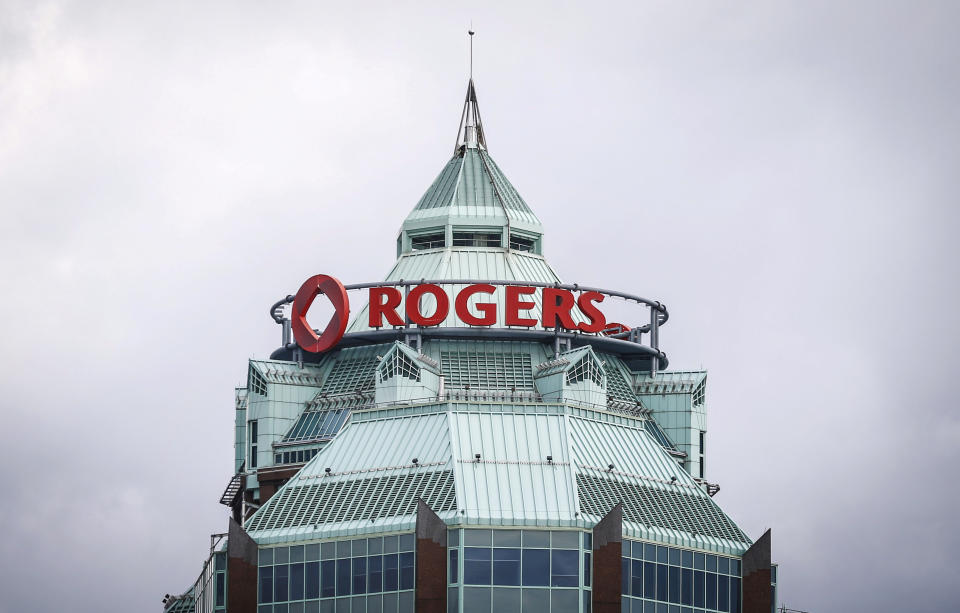Rogers reports 17% revenue decrease in Q2 due to coronavirus

Rogers Communications (RCI) (RCI-A.TO) saw a 17 per cent decrease in revenue in Q2 2020 largely attributed to a decrease in wireless service and equipment sales, as well as cable and media revenue due to the COVID-19 global pandemic.
In the three months ending June 30, the Toronto-based national carrier reported total revenue of $3.155 billion, compared to the $3.780 billion it reported in the same period a year ago.
“The wireless service revenue decrease was mainly a result of lower roaming revenue due to global travel restrictions during the COVID-19 pandemic, and lower overage revenue,” the carrier said in its earnings report that was released on July 22. “Wireless equipment revenue decrease of lower gross additions and device upgrades by existing subscribers during the pandemic.”
The report indicated that the 17 per cent weaker revenue came specifically from 13 and 17 per cent decreases in wireless service and equipment revenue, respectively, and a 50 per cent decrease in media revenue. It was also attributable to a three per cent decrease in cable revenue.
A Scotiabank report indicated the carrier would be heavily hit in the wireless services revenue, but they were below its estimates. The report added that there would be a decrease in monthly wireless subscribers as well as a lower churn rate.
The carrier reported a net income of $279 million, or 54 cents per share, down from the $591 million, or $1.15 per share that it reported in the same period a year ago. This is a 53 per cent change.
“As we expected, our second quarter results reflect the economic pressure we saw in our business as Canadians adapted to the challenges of COVID-19. As Canada’s business environment slowly improves, we will rely on our strong balance sheet, world-class networks, and leading market share position to support long term growth and drive shareholder value,” Rogers CEO Joe Natale said in the report.
Natale said during the earnings call that the company did apply for the government’s wage subsidy for its media business, but he did not indicate how much funding the company received.
“The choices were to either furlough employees and have them go on individual subsidy, or to keep employees here, take advantage of that support mechanism, trying to figure out in anticipation of when [sports] might resume,” Natale said.
“I think that trade off worked out well for us because the games are now coming. And they’re all coming at once fast and furiously and having the people on standby and ready versus having to call them back from furlough was an advantage to us as a whole.”
He added that industry sales volumes were down 80 to 90 per cent in the quarter because customers shifted from wireless usage to home internet usage.
Natale also noted that there was a material loss of advertising revenue because of the suspension of live sports which affected the entire industry including Sportsnet.
“The lack of Game Day revenue and in-stadium promotions from delayed Blue Jays baseball also contributed to a tough quarter,” he said.
The carrier’s shares were up one per cent in pre-market trading at US$41.81.
Rogers added over 200,000 monthly paid wireless subscribers in the quarter, a decrease of over 100,000 subscribers compared to the same period a year ago.
The carrier also added that it saw a 36 per cent increase in customers signing up for its unlimited data plans. There are now about 1.9 million total subscribers, the report said.
The carrier’s monthly subscriber churn rate, the measure of subscribers who deactivate their service, was 0.77 per cent, a decrease from the 0.99 per cent it reported a year before.
Rogers’ Average Billing Per User (ABPU) for the quarter was $61.57, down from $67.16 in Q2 2019.
The carrier’s Average Revenue Per User (ARPU) for the quarter was $49.09, down from $56.73 in Q2 2019.
Correction: The original story has been corrected to reflect that revenue was weaker across wireless, cable and media segments, not mainly the wireless segment.
Download the Yahoo Finance app, available for Apple and Android and sign up for the Yahoo Finance Canada Weekly Brief.

 Yahoo Finance
Yahoo Finance 